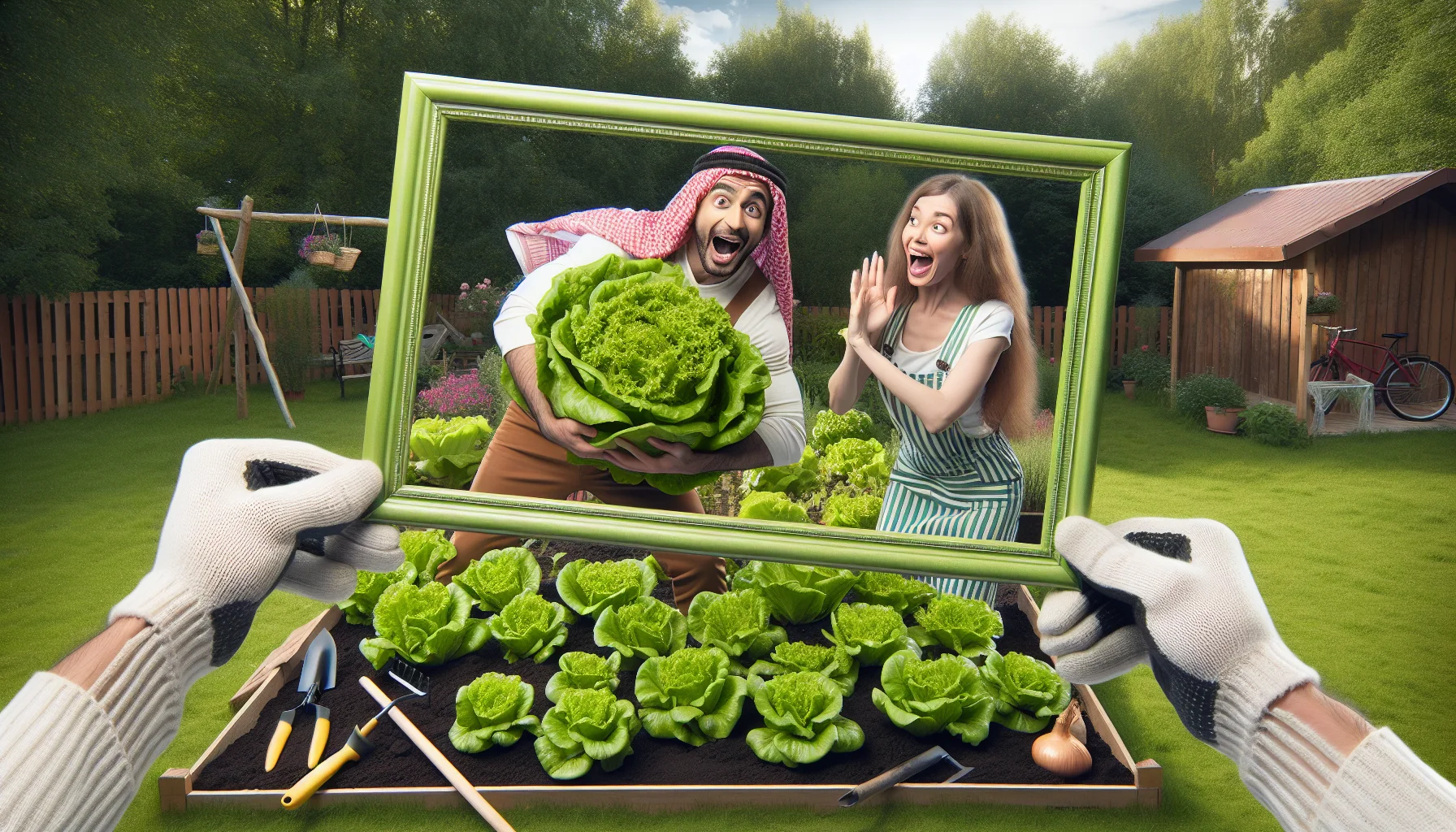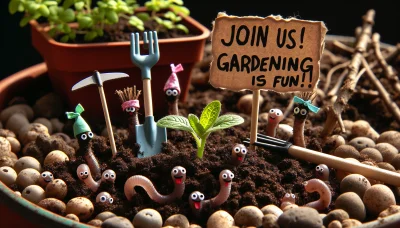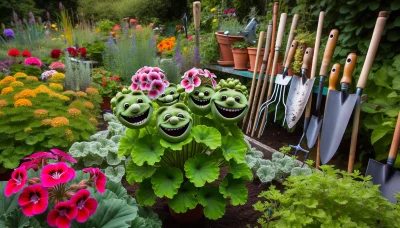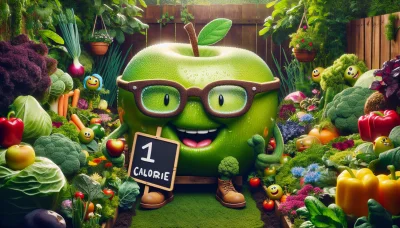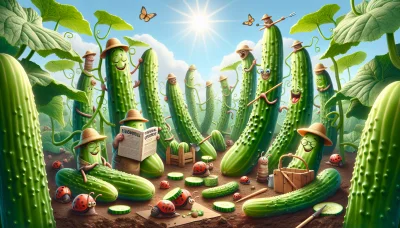Harvest lettuce Quiz
Test Your Knowledge
Question of
How to Harvest Lettuce: A Beginner's Guide
For gardeners, understanding the optimal time and technique for harvesting lettuce is crucial. This knowledge ensures that you get the most out of your garden, both in terms of yield and quality. Harvesting too early can lead to underdeveloped flavors, while waiting too long might result in bitter, overgrown leaves. Additionally, employing the correct method preserves the plant's integrity, allowing for continued growth and production. This guide aims to equip beginners with the essential insights for successful lettuce harvesting.
Identifying the Right Time to Harvest Lettuce
Harvesting lettuce at the right time is crucial for ensuring its best taste and texture. The signs of maturity vary among different types of lettuce, but there are general indicators to look out for. For leaf lettuce, you can start harvesting when the leaves are tender and big enough to eat, typically when they're about 4 to 6 inches long. This type allows for "cut and come again" harvesting, where you can cut leaves as needed without uprooting the plant. Romaine and butterhead lettuces, on the other hand, are best harvested when their heads feel full and firm but before they start to brown or bolt, which indicates they're overripe. Iceberg lettuce takes longer to mature, usually ready when the heads are compact and firm to touch. Regardless of type, it's important to harvest in the morning when the leaves are crisp, hydrated, and full of nutrients.
Tools and Preparation for Harvesting Lettuce
Before embarking on the process of harvesting lettuce, it is essential to gather the appropriate tools and make the necessary preparations to ensure a smooth and efficient harvest. Key tools for harvesting lettuce include a sharp knife or a pair of garden scissors, which are used to cut the lettuce head from the base without damaging the plant or the surrounding ones. It is also advisable to have a basket or a container on hand to place the harvested lettuce heads in, keeping them safe from bruising. Preparations involve ensuring that the lettuce is harvested at the right time, typically early in the morning when the leaves are most crisp and hydrated. Checking the weather forecast is also prudent to avoid harvesting in the heat of the day or immediately after rainfall, which can affect the quality of the lettuce. Additionally, washing and drying the tools to prevent the spread of any diseases among the plants is a critical step in the preparation process. By carefully selecting the right tools and making thoughtful preparations, the lettuce harvesting process can be made more efficient, yielding the best possible results.
Step-by-Step Guide to Harvesting Lettuce
- Choose the right time to harvest, ideally in the morning when the leaves are crisp and full of moisture.
- Identify the lettuce heads that are ready for harvest. They should be full-sized and firm to the touch.
- Using a clean, sharp knife or scissors, cut the lettuce head at its base, about an inch above the soil to encourage regrowth.
- For leaf lettuce varieties, pick the outer leaves first, allowing the inner leaves to continue growing.
- Gently shake the lettuce head or leaves to remove any loose soil or debris.
- Place the harvested lettuce in a cool, shaded area immediately to prevent wilting.
- Wash the lettuce thoroughly under cold running water to remove any remaining soil or pests.
- Use a salad spinner or gently pat the lettuce dry with clean towels to remove excess moisture.
- Store the clean lettuce in a plastic bag or container with a paper towel to absorb moisture, and keep it in the refrigerator.
- Consume the harvested lettuce within a week for the best quality and freshness.
Tips for Storing Harvested Lettuce
To maintain the freshness of harvested lettuce, begin by gently washing the leaves to remove any dirt or debris. After washing, thoroughly dry the leaves, as excess moisture can lead to premature spoilage. A salad spinner works well for this, but you can also lay the leaves out on a clean towel and pat them dry. Once dry, wrap the lettuce in a dry paper towel to absorb any residual moisture, then place it in a plastic bag or storage container. Do not seal the bag completely, as a little airflow will help keep the lettuce fresh. Store the wrapped lettuce in the crisper drawer of your refrigerator. This method helps to keep the lettuce crisp and fresh for a longer period.
Common Mistakes to Avoid When Harvesting Lettuce
- Harvesting at the wrong time of day: It's best to harvest lettuce early in the morning when the leaves are crisp, full of moisture, and have not been exposed to the sun for long.
- Waiting too long to harvest: Overripe lettuce can become bitter and tough. Harvest lettuce when it's young and tender for the best flavor and texture.
- Using the wrong tools: Use a sharp knife or scissors to cut the lettuce. Tearing the lettuce with your hands can damage the plant and the remaining leaves.
- Not harvesting outer leaves first: For leaf lettuce varieties, always harvest the outer leaves first, allowing the inner leaves to continue growing. This method encourages continuous production.
- Ignoring pests and diseases: Inspect your lettuce regularly for signs of pests and diseases. Address any issues promptly to avoid damage to the plant.
- Not watering properly before harvest: Ensure the lettuce is well-watered the day before harvesting to guarantee the leaves are hydrated and plump.
- Harvesting all at once: If you're growing leaf lettuce, harvest only what you need. This allows the plant to keep producing more leaves for future harvests.
- Forgetting to wash: Always wash harvested lettuce thoroughly to remove dirt and potential pests. It's best to wash before storage to extend its freshness.
Expanding Your Garden: What to Plant After Lettuce
| Vegetable | Planting Season | Compatibility with Lettuce |
|---|---|---|
| Carrots | Spring and Fall | High |
| Radishes | Spring and Fall | High |
| Spinach | Spring and Fall | High |
| Beets | Spring and Fall | Medium |
| Cucumbers | Spring and Summer | Medium |
| Beans | Spring and Summer | Medium |
